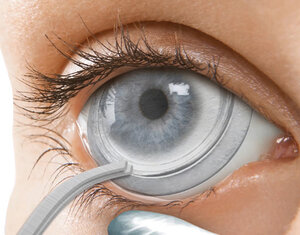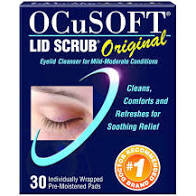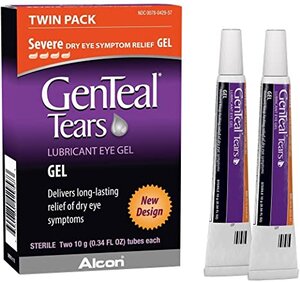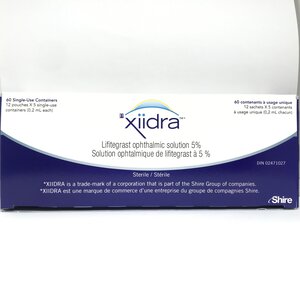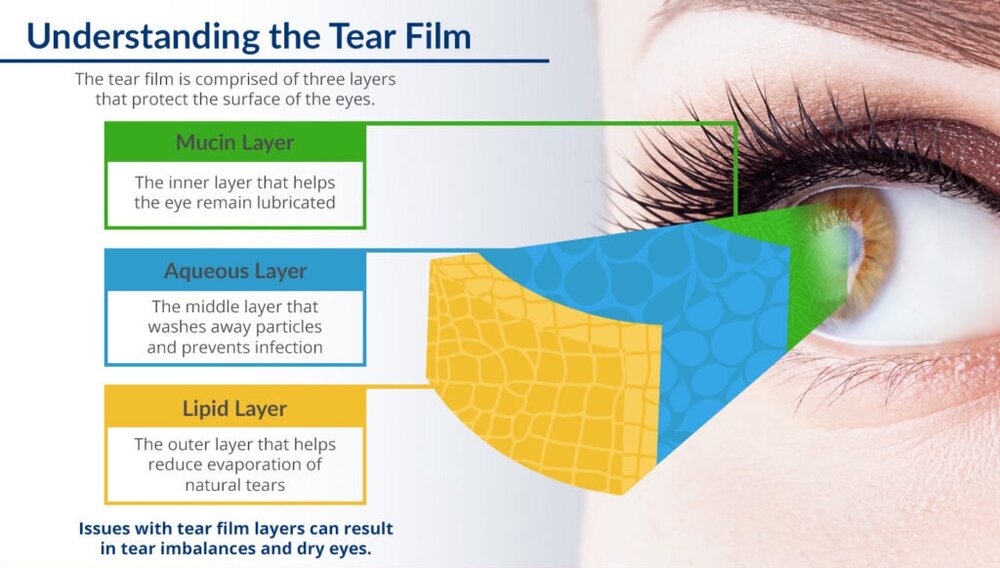
Dry eye does not necessarily mean your eyes are “dry,” but that there are signs and/or symptoms of dryness. Many people who suffer from “dry eye” have chronically watery eyes because of an imbalance in the systems that maintain the ocular surface. Dry eye disease is often associated and exacerbated by other conditions such as blepharitis, meibomian gland disease, and rosacea.
Dr Xu is bringing cutting edge dry eye treatments to Staten Island. We have the newest, and the only FDA approved IPL treatment for dry eye in Staten Island.
Dry eye symptoms can be some of the most frustrating and uncomfortable day-to-day feelings. They can severely impact your quality of life. If you often suffer from dry, irritated, burning, or gritty eyes, you may have dry eyes.
Dry eye disease is very common especially in today’s world when we are all involved in electronics, whether it is at work or at home in entertainment. Additionally, in patients with glaucoma or with environmental allergies, the glaucoma or allergy eye drops tend to contribute to additional dryness. It is a chronic condition.
Our tear film is made up of three layers; they together to help maintain the health of our eyes and ward off infection.
- OIL (LIPID) LAYER:
The outer layer of our tear film is an oil or lipid-based layer. Its main purpose is to seal the tear film which helps reduce evaporation of our natural tears.
- WATER (AQUEOUS) LAYER:
The middle layer is mostly comprised of water. Its job is to lubricate the eye, wash away particles and prevent infection.
- MUCIN LAYER:
The inner layer is the mucin layer. The mucin layer allows the watery layer to spread evenly over the surface of the eye and helps the eye remain moist and lubricated. It also provides the underlying cornea with nourishment. This layer helps the tears stick to the surface of the eye.
Causes of Dry Eye Disease
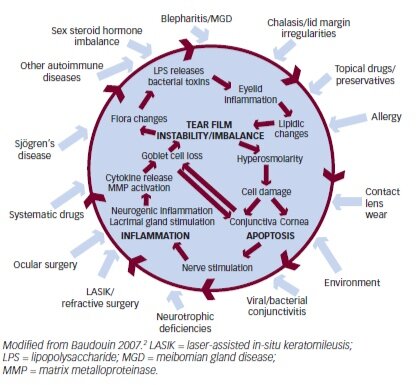
Tear Film and Ocular Surface Society (TFOS) defined “Dry eye is a multifactorial disease of the ocular surface characterized by a loss of homeostasis of the tear film, and accompanied by ocular symptoms, in which tear film instability and hyperosmolarity, ocular surface inflammation and damage and neurosensory abnormalities play etiological roles.”
The causes of dry eyes are multifactorial:
- Age:
As our eyes go through natural changes, tear production become less and the tear film may become less stable causing faster evaporation. For this reason, dry eyes are more common in those over 65. However, nowadays, we see many younger 20-30 years old with dry eyes too (see other causes below).
- Hormone related:
Post menopausal women are more likely to develop dry eyes caused by a decrease in estrogen. Studies shown that women over 50 have a 50% greater risk of dry eye disease than men of the same age.
- Medications:
Antihistamines for allergies, decongestants for cold, oral contraceptives, diuretics for blood pressure or weight loss, antidepressants, and many other medication have side effects in reducing tear production and causing dry eyes.
- Medical conditions:
Patients with an autoimmune disease such as Lupus, rheumatoid arthritis, Hashimoto thyroiditis are more likely to develop lacrimal gland inflammation. The Lacrimal gland is the tear-production powerhouse. Thus, patients with these conditions are more likely to suffer dry eyes.
- Eyelid Malposition/inflammation:
Inflammation of the eyelids (from blepharitis or rosacea) or inward/outward turning of the eyelid (entropion/ectropion) cause tear film instability.
- Environmental factors
-
- Windy and dry climates increase tear evaporation.
- Digital eye strain: when we focus on a screen (computer, cellphone, iPads) or when reading for prolonged period, we naturally reduce our blinking rate, causing evaporative dry eyes.
- Air conditioners or heaters are associated with tear insufficiency.
- Other factors:
-
- Contact lens use
- LASIK surgery
- Eyelid surgery like upper lid blepharoplasty
- Bell’s palsy
What we do
Insight Ophthalmology takes dry eye treatments very seriously. We combine the latest know-how with the absolute latest technology. We offer a trifold approach, treating dry eye, and the associated ocular/skin issues of blepharitis and rosacea. We are one of the only area clinics that offer in-office IPL with the only FDA approved IPL in treating dry eyes.
Dr. Xu will create a personalized regimen that improves vision, comfort and quality of life, without being overly burdensome.
“Doc, I am tearing. How can I have dry eyes?!”
Dry eyes develops when the amount of tears produced is not sufficient to maintain the moisture balance in your eye. Ironically in an effort to fight off the condition, dry eyes can cause you to produce excessive tears, which is why some people experience watery eyes.
Symptoms of Dry Eye Disease
Symptoms of dry eye syndrome can vary depending on the severity of the condition but can include:
- Dry, itchy eyes
- Burning or stinging
- Irritation
- Watery eyes
- Blurred vision
- Pain
- Foreign body sensation
Did you know?
Dry eye disease frequently co-exists with
- Meibomian gland disease
- Blepharitis
- Rosacea
We take an individualized step-wise approach, to give our patients the most relief of symptoms with the least amount of to-do items.
Diagnostic Modalities
- Fluorescein and Vital Dye staining
- Tear Break Up Time
- Schirmer Testing
- SPEED questionnaire
- Sjogren antibody blood test
- Corneal Topography
To start, make an appointment for dry eye consultation with Dr Xu. A comprehensive exam helps to define the problems and area of focus.
In recent years, new advanced diagnostic and treatment devices have been developed and can make a substantial difference in the treatment of this condition.
Our goal is to make you “forget” about your eyes. If you are not thinking about your eyes, that means they are not bothering you.
You should be enjoying your vision not reminded of any discomfort.
Treatment Options
- Holistic dietary adjustment and supplements
- Tear Substitutes, drops, gels
- Lid warming eye masks
- Tea Tree Oil based lid cleanser
- Omega 3 – triglyceride form, Oral supplement
- Prescription eyedrops (Restasis, Cequa, Klarity-C, Xiidra drops)
- Punctal plugs
- Debridement of lid margin
- Intense Pulsed Light (IPL)
- Autologous Serum Eye Drops (ASED)
- Protopic ointment
- Doxycycline
- Azithromycin drops
- Environmental modifications such as humidifier, moisture goggles



